clinical and food microbiology BM6CFM (BM6CFM)
Aston University, Birmingham (Aston)
All 7 results
Sort by
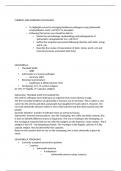
-
current and emerging pathogens
- Lecture notes • 20 pages • 2024
- Available in package deal
-
- £6.56
- + learn more
– To highlight current & emerging foodborne pathogens using Salmonella Campylobacter and E. coli O157 as examples. – Following this lecture you should be able to: • Relate the microbiology, epidemiology and pathogenicity of Salmonella, Campylobacter & E. coli O157. • Define the symptoms presented following infection with Salm. Camp. and E. coli. • Describe the routes of transmission of Salm. Camp. and E. coli and how they become associated with food.
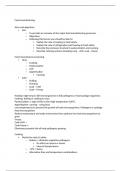
-
FOOD MANUFACTURING
- Lecture notes • 11 pages • 2024
- Available in package deal
-
- £5.46
- + learn more
Aims and objectives. • Aim – To provide an overview of the major food manufacturing processes. – Objectives – Following this lecture you should be able to: • Explain the role of cooking in food safety. • Explain the role of refrigeration and freezing in food safety. • Describe the processes involved in pasteurisation and canning. • Describe catering systems including cook – chill, cook – freeze
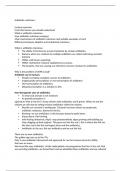
-
ANTIBIOTIC RESISTANCE
- Lecture notes • 11 pages • 2024
- Available in package deal
-
- £6.46
- + learn more
From this lecture you should understand What is antibiotic resistance How antibiotic resistance emerges Main mechanisms of antibiotic resistance and suitable examples of each Difference between adaptive and mutational resistance What is antibiotic resistance. • The ability of bacteria to survive treatment by certain antibiotics. • Bacteria which are resistant to multiple antibiotics are called multi-drug resistant bacteria • MSRA- well known superbug. • MSRA- methycline re...
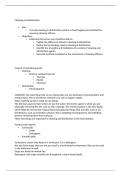
-
CLEANING AND DISINFECTION
- Lecture notes • 11 pages • 2024
- Available in package deal
-
- £5.46
- + learn more
• Aim – To study cleaning & disinfection practice in food hygiene and methods for assessing cleaning efficacy. • Objectives – Following this lecture you should be able to: • Explain the difference between cleaning & disinfection. • Define the terminology used in cleaning & disinfection. • Identify the strengths and limitations of a variety of cleaning and disinfection agents. • Describe methods available for the assessment of cleaning efficacy.
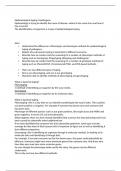
-
EPIDEMIOLOGICAL TYPING OF PATHOGENS
- Lecture notes • 9 pages • 2024
- Available in package deal
-
- £6.56
- + learn more
• Understand the difference in Phenotypic and Genotypic methods for epidemiological typing of pathogens. • Explain why sub-species typing is important in different scenarios. • Describe how to conduct and the reasoning for a number of phenotypic methods of typing such as: Serotyping, Phagetyping, Biotyping and Anitbiogram. • Describe how to conduct and the reasoning for a number of genotypic methods of typing such as: Plasmid RFLP, Chromosomal PFGE, and PCR-based methods. • T...
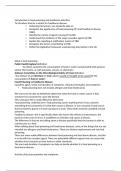
-
INTRO TO FOOD POISONING
- Lecture notes • 8 pages • 2024
- Available in package deal
-
- £6.56
- + learn more
To introduce food as a vehicle for foodborne disease. • Following this lecture, you should be able to: • Recognise the significance of food poisoning (FP) and foodborne disease (FBD). • Identify the variety of agents causing FP & FBD. • Understand the incidence of the major causative agents of FBD • Explain the reporting & notification system of FBD. • Recognise the factors contributing to FBD. • Define the legislative framework underpinning food safety in the UK.
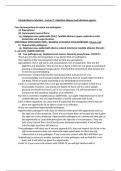
-
clinical and food microbiology lecture 1-16
- Package deal • 16 items • 2024
-
- £10.49
- + learn more
This consists of all of the lectures included in the clinical and food microbiology module. All lecture notes include the aims & objectives of the lecture at the start of the document and then proceed to go into great detail about the topics at hand. These lecture notes were created using synch & asynch lectures which are reused yearly at aston uni

£5.50 for your revision notes multiplied by 100 fellow students... Do the math: that's a lot of money! Don't be a thief of your own wallet and start uploading yours now. Discover all about earning on Stuvia


